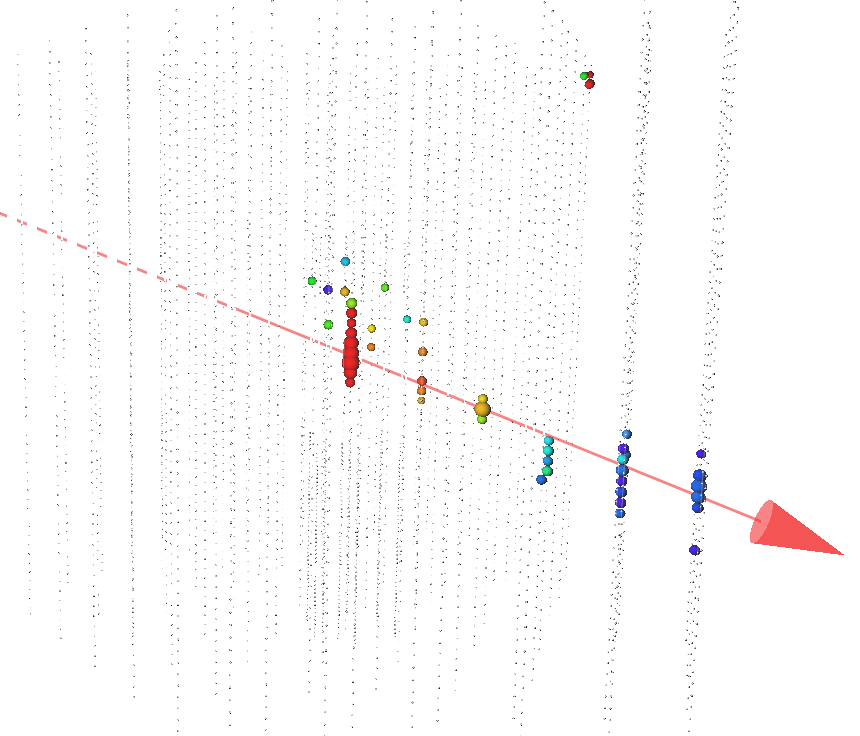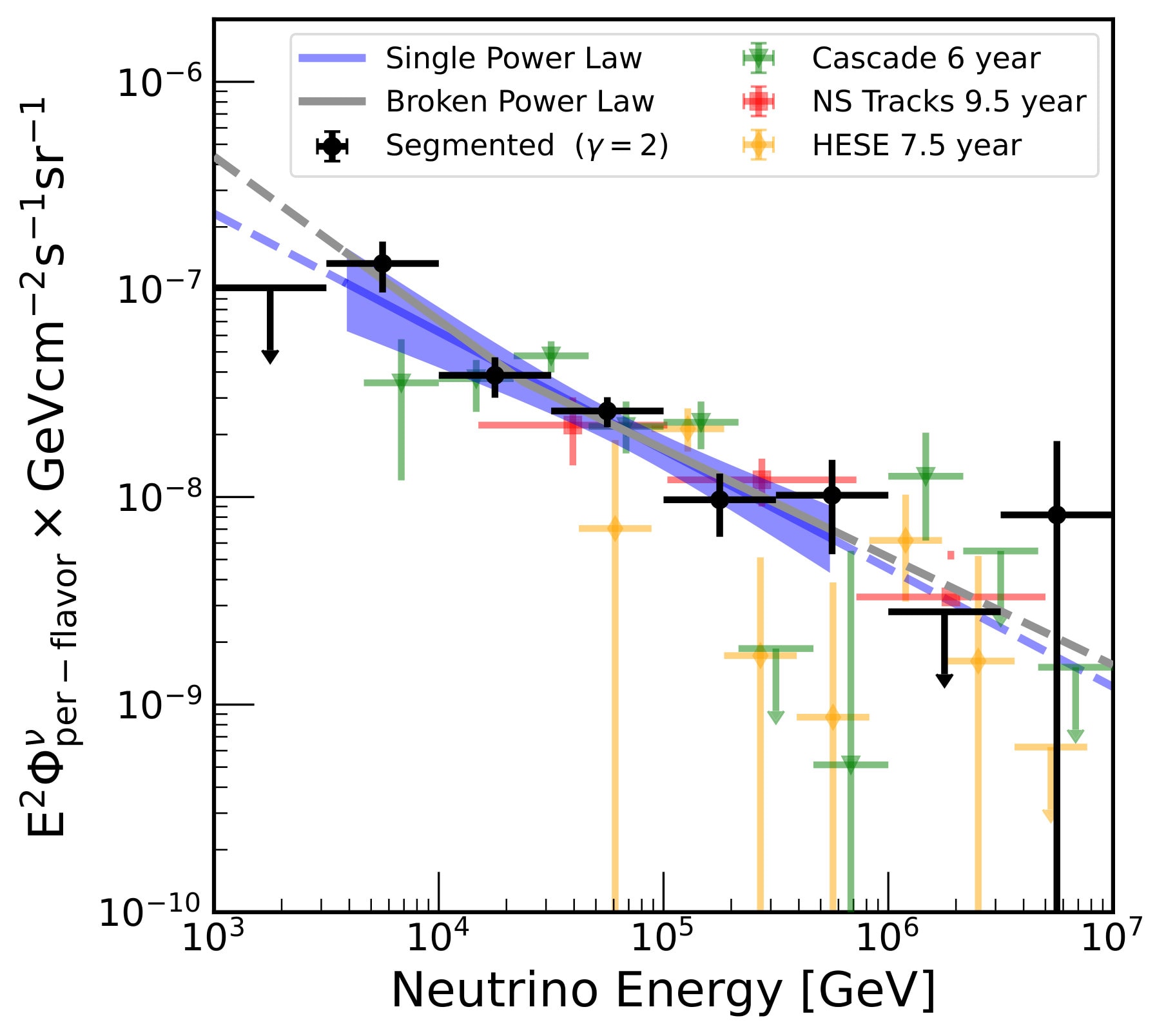Since astrophysical neutrinos of high energy were first observed in 2013, the IceCube Neutrino Observatory at the South Pole has continued searching for their sources. So far, evidence of high-energy neutrino emission has been found from the blazar TXS 0506+056, the active galaxy NGC 1068, and most recently, the Milky Way. However, the neutrino streams, or neutrino flux, from these sources alone do not account for the total astrophysical neutrino flux. As such, researchers are still on the hunt for cosmic sources of astrophysical neutrinos.
The IceCube Collaboration presents an analysis using a new dataset consisting of starting track events for measuring the lower energy astrophysical neutrino flux. For the first time, researchers have identified muon neutrinos at energies well below 100 TeV that are classified as cosmic in origin. Their results were included in a paper recently submitted to Physical Review D.
For the analysis, IceCube collaborators used 10 years of IceCube data and looked at a specific morphology of neutrino events called starting track events, caused by a muon neutrino that interacts within the instrumented volume of IceCube.

Compared to other data sets, this event sample offers an unprecedented capability of analyzing the cosmic neutrino spectrum at an energy range that, to date, has been highly obscured by backgrounds. To find these events, a new identification method had to be developed.
The analysis took advantage of the idea that for a particular class of neutrino events that interact reliably inside the detector and point downward, it can be determined that they are of cosmic origin. This is because only cosmic neutrinos arrive without contamination by other muons that are characteristic for background events from the atmosphere.
By using this enhanced starting track event selection (ESTES), the collaborators achieved rejection of not only the overwhelming atmospheric muon background but also the accompanying neutrino background seen at energies below 100 TeV, all while capturing a high number of astrophysical neutrinos with the new dataset. However, this was not an easy task since the background outnumbered the cosmic neutrinos by a ratio of 10 million:1.
They then tested various theoretical models that characterize the energy spectrum of astrophysical neutrinos, including the simple power law (SPL) model.

“We measured the flux under the SPL model and observed excellent agreement with previous IceCube measurements,” says Manuel Silva, recent PhD graduate of UW–Madison (now senior data scientist at Northrop Grumman) and a lead on the study. “This SPL was found to be the lowest astrophysical flux measurement in IceCube to date, extending our reach all the way down to 3 TeV.”
A future analysis will use the new dataset to confirm last year’s discovery of high-energy neutrino emission from the Milky Way. Because starting tracks have a better pointing ability than cascade-like events, the dataset will better differentiate between diffuse or point-like neutrino emission from the Milky Way.
“This new result is very interesting because it is the first time the muon neutrino flux has been measured to such high precision at these lower energies, opening a new window into neutrino astronomy,” says Silva.
+ info “Characterization of the Astrophysical Diffuse Neutrino Flux using Starting Track Events in IceCube,” IceCube Collaboration: R. Abbasi et al., arxiv.org/abs/2402.18026